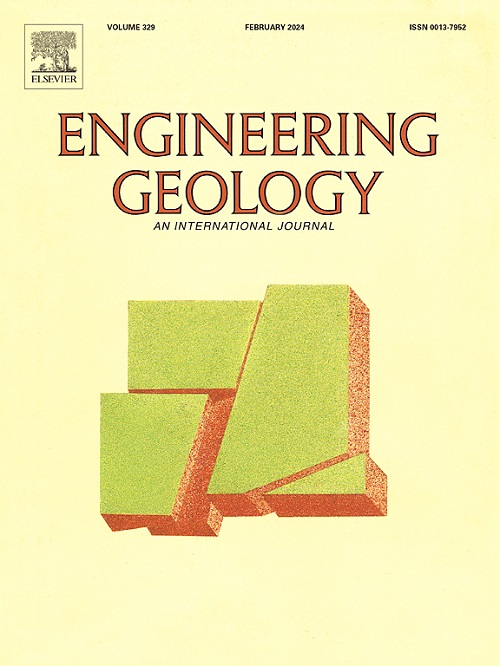Rockfalls trajectography: 3D models predictive capability assessment and coefficients calibration using optimization-based processes
IF 6.9
1区 工程技术
Q1 ENGINEERING, GEOLOGICAL
引用次数: 0
Abstract
This paper presents a method for assessing the predictive capability of three-dimensional (3D) trajectographic simulation models by back-analysis of real rockfall events. Relying on the Optimal Transport theory, we measure the difference between observed and simulated rock stop points distributions with the Wasserstein distance: this metric can be seen as a measure of the mean distance between observed an simulated stop points. We use the Wasserstein distance as a cost function in a Black Box optimization algorithm to calibrate soil restitution and energy dissipation coefficients. We test our methodology with the RocPro3D software to simulate a man-triggered boulder detachment, for which the final position of fragmented rocks is known. The calibrated simulation parameters enabled a 25% decrease in the mean prediction error.
求助全文
约1分钟内获得全文
求助全文
来源期刊

Engineering Geology
地学-地球科学综合
CiteScore
13.70
自引率
12.20%
发文量
327
审稿时长
5.6 months
期刊介绍:
Engineering Geology, an international interdisciplinary journal, serves as a bridge between earth sciences and engineering, focusing on geological and geotechnical engineering. It welcomes studies with relevance to engineering, environmental concerns, and safety, catering to engineering geologists with backgrounds in geology or civil/mining engineering. Topics include applied geomorphology, structural geology, geophysics, geochemistry, environmental geology, hydrogeology, land use planning, natural hazards, remote sensing, soil and rock mechanics, and applied geotechnical engineering. The journal provides a platform for research at the intersection of geology and engineering disciplines.
 求助内容:
求助内容: 应助结果提醒方式:
应助结果提醒方式:


